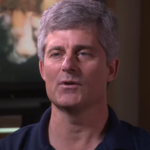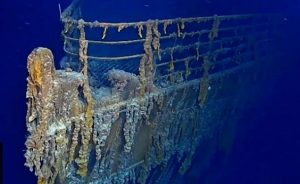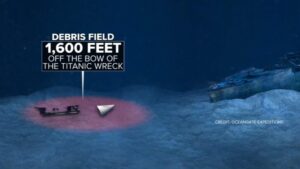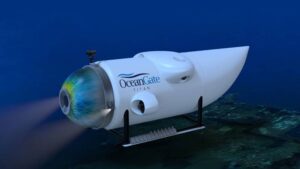
 When RMS Titanic sank to the ocean floor after hitting an iceberg on April 15, 1912, it immediately became a “media sensation” for lack of a better term. Everyone wanted to know more about the ship. They wanted first to find it, and when it was finally located, everyone wanted to see and hear more about it. Once submarines were created to be able to go to that depth, the wreck was researched and view the world over. Still, people couldn’t “visit” the ship. It became an obsession similar I suppose to a trip to outer space. Still, you knew that at some point, someone would pave the way for excursions to the site of the Titanic wreck and with that would come the eventual possibility for anyone with enough money to purchase a ticket to make the journey for the sake of being able to actually say they “had been there.”
When RMS Titanic sank to the ocean floor after hitting an iceberg on April 15, 1912, it immediately became a “media sensation” for lack of a better term. Everyone wanted to know more about the ship. They wanted first to find it, and when it was finally located, everyone wanted to see and hear more about it. Once submarines were created to be able to go to that depth, the wreck was researched and view the world over. Still, people couldn’t “visit” the ship. It became an obsession similar I suppose to a trip to outer space. Still, you knew that at some point, someone would pave the way for excursions to the site of the Titanic wreck and with that would come the eventual possibility for anyone with enough money to purchase a ticket to make the journey for the sake of being able to actually say they “had been there.”
When Titan was created, that dream became a reality…for a time. Titan was a submersible operated by the private American tourism and expeditions company OceanGate. The company was founded in 2009 by Stockton Rush and Guillermo Söhnlein. Beginning in 2010, OceanGate took paying customers in leased commercial submersibles off the coast of California, in the Gulf of Mexico, and in the Atlantic Ocean. OceanGate was in Everett, Washington. The trips were profitable, but Rush couldn’t get past the thought that visiting shipwreck sites would be a great way to generate media attention. OceanGate had gone to a few other shipwrecks, including its 2016 dive to the wreck of Andrea Doria aboard their other submersible Cyclops 1. Then in 2019, Rush told Smithsonian magazine: “There’s only one wreck that everyone knows … If you ask people to name something underwater, it’s going to be sharks, whales, Titanic.” And in the end, all three can prove deadly.
The unfortunate reality was that while Titan looked very cool and would likely be just the media draw that Rush had hoped for, the materials used in its construction were not what would be needed to make it a safe vehicle at the depth of the Titanic. Rush didn’t see that the vehicle was dangerous, even though several people told him it was unsafe. Some people who had planned to go even cancelled before that fateful trip, but unfortunately not all od them. In the end, five people, including Rush made the trip to see Titanic for themselves. Also aboard the submersible were Paul-Henri Nargeolet, a French deep-sea explorer and Titanic expert, Hamish Harding, a British businessman; Shahzada Dawood, a Pakistani-British businessman and Dawood’s son, Suleman. One hour and 45 minutes into the dive, communication between Titan and its mother ship, MV Polar Prince, was lost. Everyone knew what that meant, but they couldn’t give up hope. When Titan 
 failed to resurface at the scheduled time later that day the authorities were notified. Four days later, a remotely operated underwater vehicle (ROV) discovered a debris field containing parts of Titan, about 1,600 feet from the bow of the Titanic. Of course, all onboard were crushed to death instantly. They would not have felt a thing.
failed to resurface at the scheduled time later that day the authorities were notified. Four days later, a remotely operated underwater vehicle (ROV) discovered a debris field containing parts of Titan, about 1,600 feet from the bow of the Titanic. Of course, all onboard were crushed to death instantly. They would not have felt a thing.


Leave a Reply